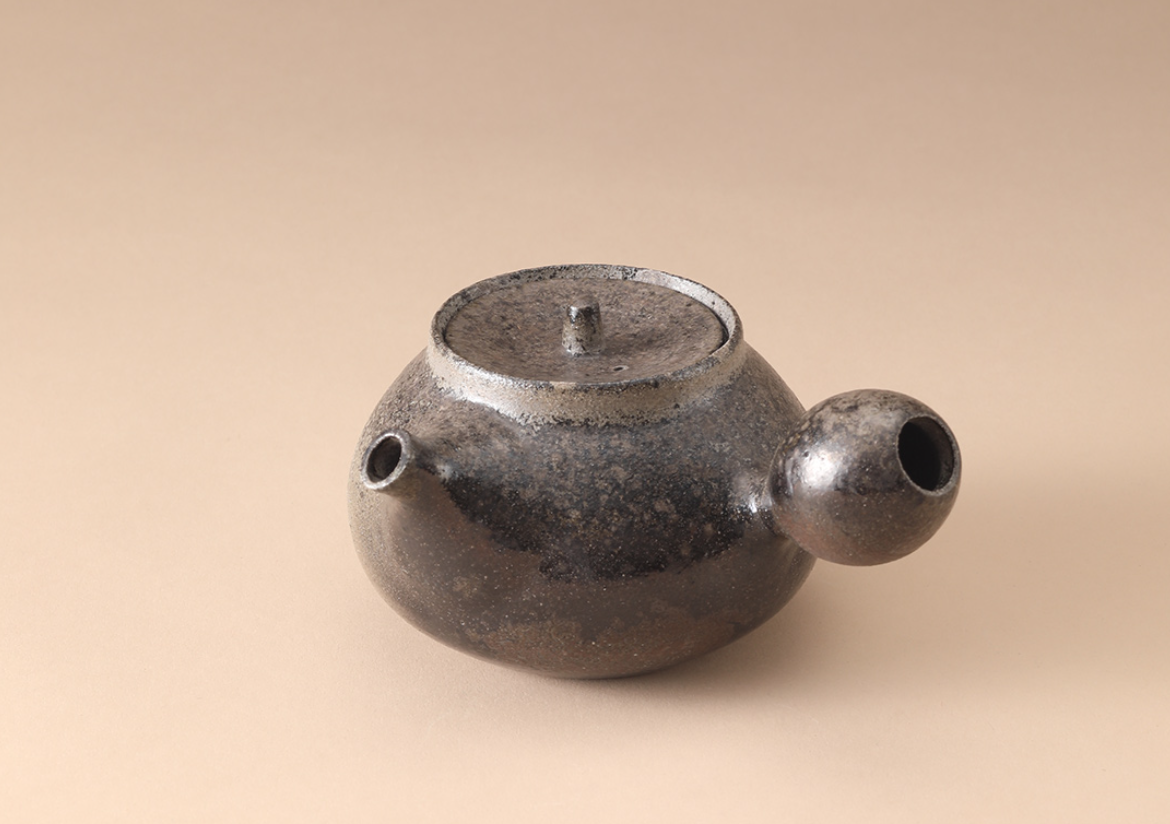The Noto Peninsula extends to the Sea of Japan from Ishikawa Prefecture. Its beautiful coastal scenery encircles rural villages and centuries old craft cultures. Among which, a style of pottery: Suzuyaki (珠洲焼).
This pottery style dates back to the 12th century and was presumably influenced by kilns of other regions, such as Tokoname. Quite soon it reached its golden period, as sea transport was more frequent than land. There is some evidence of Suzuyaki reaching all the way north up to Hokkaido. Historically its products were typically made for everyday use: jars, pots or mortars. Later on it seems it could not compete with larger scale production of other pottery areas and went into decline to completely vanish in the 15th-16th centuries. But in recent times, the production of Suzuyaki has resumed.
The peculiarity of this pottery style is its natural somber grey, greenish and almost pink hue on a dark black surface. This is because of the kiln and the techniques used. Suzuyaki is traditionally fired in long tunnel-like kilns built on slopes. The pottery is not glazed, nevertheless, the wood used to fire the kiln turns into ashes becoming glaze-like on the pottery and creating the specific texture of this style with quite a unique finish. Also another peculiarity is the sealing of the kiln: a large amount of wood is put into the kiln and when the temperature reaches its maximum (around 1200Cº), the kiln is sealed. In this way, there is no oxygen entering from the outside. This reduces the iron in the clay and creates the greyish-black color that is so characteristic of Suzuyaki.
Studies and research started on Suzuyaki in the 1950s, after finding the remains of old kilns. After that, this style of ceramics got the national recognition and has been crafted by about 40 potters. Even if not famous for teaware, there are some artists creating beautiful examples of it. One of them is Shinohara Takashi. Recently, the Noto peninsula unfortunately made the news because of a devastating earthquake that afflicted all the area last January. As many of other potters, Takashi-san sadly lost his kiln. Even more sad, the kiln had just been rebuilt after being destroyed by two previous earthquakes in the past few years. But the artist’s resilience and love for Suzuyaki are giving him the strength to build once again, so he can keep creating the beautiful colors and textures of Suzuyaki legacy.
Image source: Suzu Ware website, teapot by Takenori Shimizu

